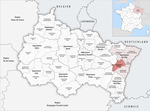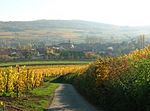Molsheim Charterhouse (French: Chartreuse de Molsheim) is a former monastery of the Carthusian order, or charterhouse, located in the heart of the town of Molsheim, in the Lower Rhine region of Alsace (Grand Est region, France). It now houses the Musée de la Chartreuse.
After the Carthusian monastery of Koenigshoffen was destroyed in 1591, the Carthusian community took refuge with the Jesuits in Molsheim, the Alsatian capital of the Counter-Reformation, where the community decided to re-establish itself and to build a new monastery in 1626. This foundation is a rare, if not unique, case of a Carthusian monastery conceived as being integrated into the urban territory, which implies certain particular arrangements of the space.This new charterhouse quickly became the city's main religious building in the 17th and 18th centuries. It is particularly renowned for the quality of the stained glass windows that decorated the large cloister of the fathers, as well as for its rich library and especially the famous codex Hortus deliciarum, which was kept there for several decades. The monks were also known for the medicinal "balls" that they made and sold.
The charterhouse was active until the French Revolution, during which time it was closed, sold as national property, divided into several lots, partially destroyed and provided with an urban roadway. For nearly two centuries, the remaining parts of the monastery, divided among several owners, were redeveloped or demolished as need arose. The furniture and stained glass windows were dispersed; some of them were destroyed later, either in 1870 during the siege of Strasbourg or during the Second World War. The local hospital acquired almost all the temporal buildings.
It was not until 1981 that an awareness of the heritage value of the remaining buildings emerged. From that date onwards, the municipality bought parts of the building and volunteers began restoring the buildings and the grounds. In 1985, the historical museum of the city of Molsheim, which had previously been located in the Metzig, moved into the former prior's house, as the Musée de la Chartreuse. In 1986, the Bugatti Foundation also set up an exhibition room in the former monastery kitchens.
The building has been classified as a historical monument since December 23, 1998.











